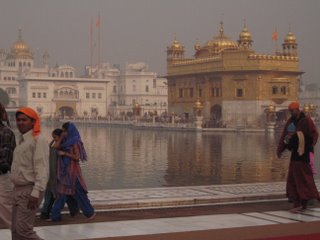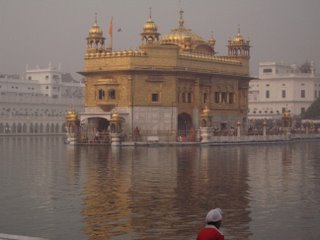This is just a little thought experiment. I’m going to try to keep the analogy simple. [I didn't succeed. Life is complicated and so many things are interrelated. But the basic analogy you can read quickly.]
Fill in the blank:
___ is to Alaska what football is to Penn State.
I'm sure every Alaskan reader would immediately say "thoughtfulness." No? How about that black gooey stuff?
When things go wrong, the very least we can do is learn something from them so that when the elements return in a different disguise, we can recognize them. What then are the key elements of these two stories?
The Penn State
1.
A sacred cow - At Penn State, football served the function of uniting everyone in spirit and (at least people believe) generated a lot of money, which was translated into enhanced programs and lots of jobs on campus for people in the surrounding community. Certainly the hotels and bars and restaurants benefited from crowds coming to home football games, and buying Penn State paraphernalia. The university benefited from the television money the highly ranked football team brought in.
Challenging the sacred cow in any way 1) is disloyal to the Penn State spirit and 2) threatens a lot of people’s income.
This results in relatively little scrutiny because 1) everyone wants to believe in the goodness of football and 2) those benefiting don’t want to threaten those benefits. The rule of a sacred cow is that no one should raise embarrassing questions. So people self-censor, knowing that any criticism will bring on quick retaliation.
2.
Big fish in a small pond. Penn State is located in a relatively small city where its and football's influence is much bigger than it would be in a larger city. A challenge from inside is unlikely.
3.
An aging hero with long incumbency- Joe Paterno's 45 year career made him
the longest serving head coach in US college football. Born in 1926, Paterno became Penn State’s assistant football coach in 1950, and the head coach in 1966.
Dan Rorabaugh at US News wrote a line that appears repeatedly online: “Joe Paterno is Penn State.” Paterno did a lot of good. In addition to winning, Paterno's team regularly
had high graduation rates. In 2011 his dynasty ended when it was disclosed that he knew that his trusted, long-term assistant coach and friend, had been sexually molesting young boys in Penn State related programs for many years. Paterno died shortly after that.
4.
A spoiler: A good friend of the hero who turns out to have some serious problems - For whatever reasons, personal loyalty, protecting the sanctity of PSU football, disbelief, Paterno turned a blind eye to Jerry Sandusky's crimes. More than a blind eye,
according to the Freeh Report. The hero, it turns out, knew and blocked attempts to do something about it.
The Alaskan Story
1.
The Alaska sacred cow has to be oil. And probably to an even greater extent than football at Penn State. Close to 90% of the state revenue comes from oil. Every community has projects that were built on oil money. Every citizen is eligible for a permanent fund check.
2.
Oil is a whale in a small pond up in Alaska.
3.
An aging hero with long incumbency - There is no hero as closely linked to oil as Paterno was linked to football. The Alaskan most similar to Paterno was Senator Ted Stevens. Senator Lisa Murkowski said at Stevens’ memorial
"Ted was Alaska – he just was Alaska.” He was born in 1923 and was appointed to the US Senate in 1968. Seeing any patterns?
When he left, he was the
longest serving Republican in Senate history. In 2008 a good friend and political ally from the oil industry testified against Stevens in court. Stevens was convicted and lost his reelection bid months later. (The charges were later vacated by Obama’s incoming Attorney General because of prosecutorial misconduct.) Stevens died in a plane crash two years later.
4.
A spoiler: A good friend of the hero who turns out to have some serious problems. Bill Allen, a high school dropout who became a powerful political king-maker as the head of his billion dollar oil support company VECO, became a witness for the Department of Justice against a number of Alaskan politicians including Ted Stevens. Aside for political corruption on behalf of the oil industry,
Allen is alleged to have had an affair with an underage young woman.
In the Penn State case, the Pennsylvania Attorney General's office came into the small Pennsylvania town where the University is located to prosecute Jerry Sandusky. Penn State University accepted Joe Paterno's early retirement. A University commissioned report by former FBI Director Louis Freeh harshly condemned a number of Penn State officials. Paterno and three other key officials "
are portrayed as manipulating administrative channels to protect Sandusky, the football program and their own reputations." [If Alaska is a model, Pennsylvanians should watch for the rehabilitation of Joe Paterno in the not too distant future.]
In Alaska, the FBI began a covert operation which video taped Bill Allen's hotel suite in Juneau as he entertained legislators and made deals with them trying to prevent tax changes that were not approved of by the oil companies. Allen cooperated with the Justice Department and was a witness in a number of
court cases where state legislators were convicted of various corruption charges. He also was the key witness in the Stevens trial in DC, where Stevens was convicted as well. Stevens lost his reelection bid shortly after, narrowly. However, Obama's attorney general vacated Stevens' conviction because of prosecutorial misconduct.
In the meantime, a former oil company lobbyist is now the governor of Alaska. And few see any problem with this. Can you imagine the outcry if the former lobbyist for Green Peace or Wilderness Society were governor? Although the oil companies have been tarnished, their interests are still in power and they are spending money to maintain their sacred status, aided in the upcoming election by the Citizens United decision.
Oil plays an important role in the world. Oil has brought Alaska wealth and benefits we could not have had otherwise. But any faction that gains so much power and influence in any society or institution, begins eventually to feel entitled and gets harder and harder to keep accountable.
The stifling of sacred cow challengers shows up in lots of places.
- Why weren’t people asking more questions about the home loan industry? Or listening to those who did?
- Why didn’t parents believe their kids who said the priest molested them, of if the kids remained silent, why didn’t they question the kids’ different behavior?
- Why has it taken so long for the military to address the many psychological problems of soldiers returning from Iraq and Afghanistan? Or take seriously the complaints of sexual harassment and assault by women in the military?
- Why do we continue to spend billions on the so called War on Drugs when it clearly is so ineffective?
All of these issues involve sacred cows that people want to believe in and people resist those who challenge those beliefs. They all involve people who benefited from silencing and marginalizing those who challenged the system. All of them have wealthy interests funding misinformation campaigns to convince the public and the decision makers that there is no problem.
This is nothing new in human history. Ruling classes have brainwashed their subjects from the beginning. Americans think they are different, yet large numbers of our populaltion succumb to empty slogans, and to appeals to their fears and insecurities.
I think about Egyptians and Libyans and Russians and Syrians who see through their government’s lies and risk their lives to change things. Americans are willing to sacrifice the lives and mental health of the relatively few Americans who serve in the military, but what are they personally willing to sacrifice?
It turns out that not staying alert has cost people their homes, their savings, and their jobs. It wasn't a voluntary sacrifice. Rather, enough people voted for those false slogans and put people into power whose faith in unbridled capitalism allowed bankers and traders to make fortunes on what turned out to be giant swindles.
We get another turn at bat in November. The propagandists are already spinning their lies and spreading hate and fear to convince voters to forget the size of the catastrophe that Obama inherited and instead blame him for the fallout of the Bush2 administration.
----------
While I was looking for a link to support a point I'd made, I found that
Cliff Groh had already made the Paterno-Stevens comparison in November 2011.

























